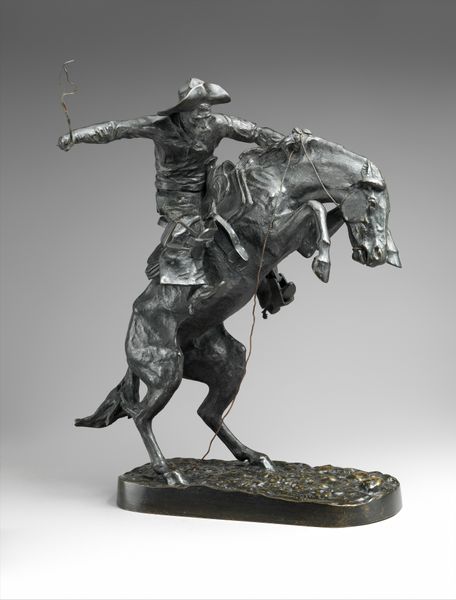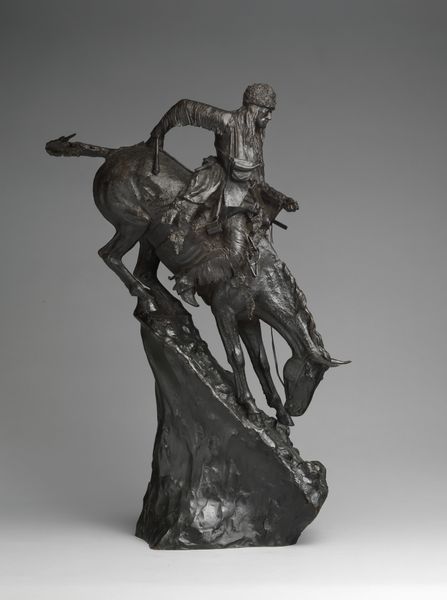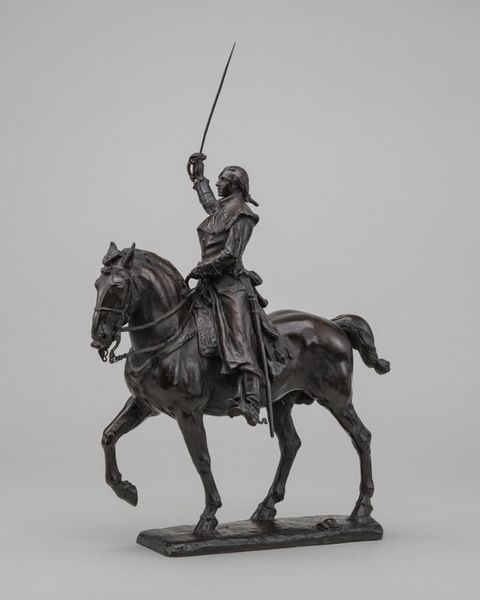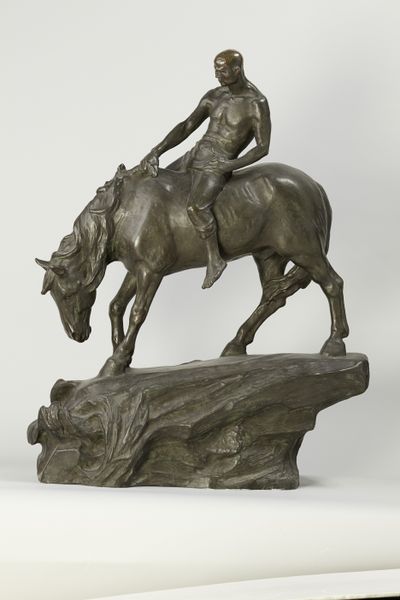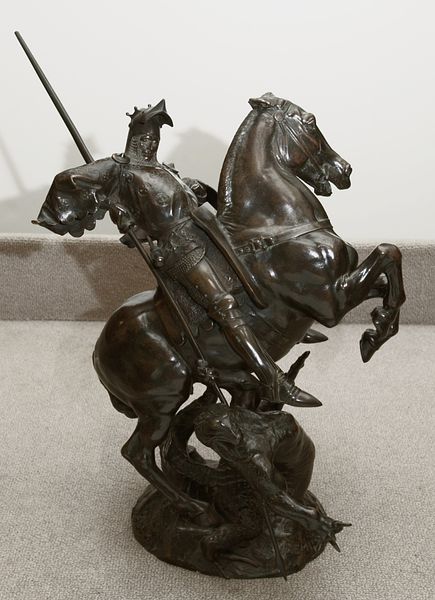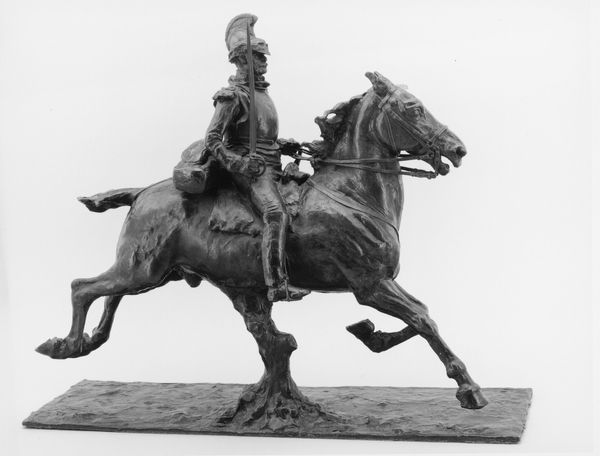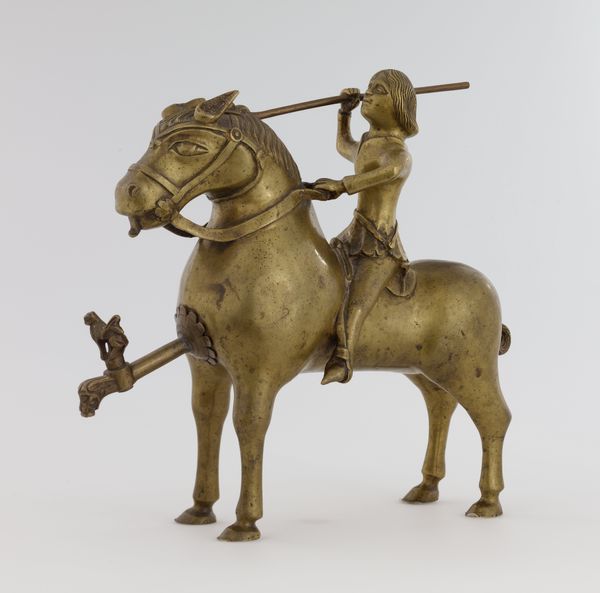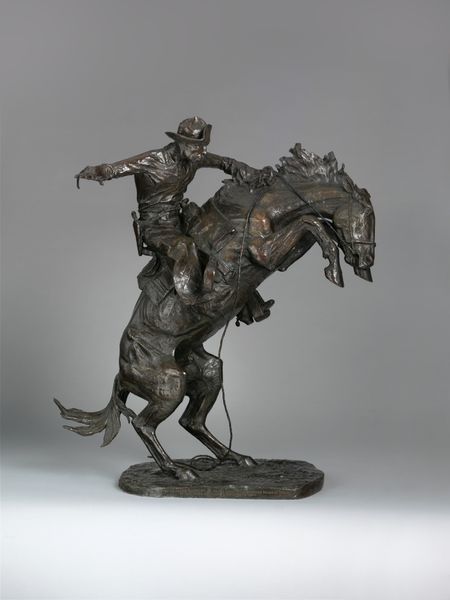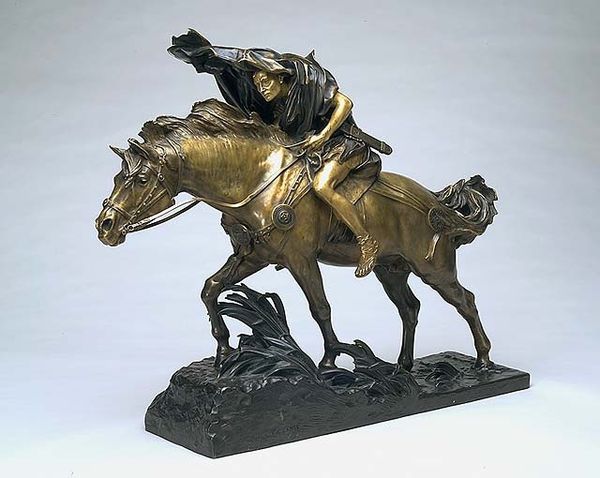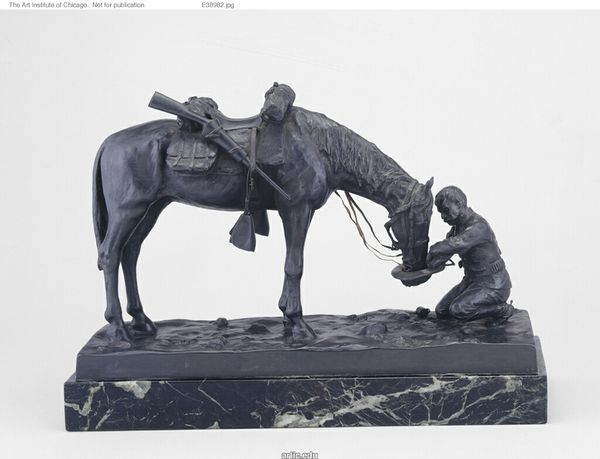
bronze, sculpture
#
sculpture
#
bronze
#
figuration
#
sculpture
Dimensions: 63.5 × 48.5 × 23.5 cm (25 × 19 1/8 × 9 1/4 in.)
Copyright: Public Domain
Curator: Take a look at Frederic Remington’s “The Scalp Lock,” rendered in bronze, sometime after 1898. It's currently held here at The Art Institute of Chicago. Quite a piece, isn't it? Editor: Wow. Intense. The raw emotion, that defiant pose...it hits you right away. Dark, brooding, feels almost like a scream frozen in metal. Curator: Exactly. The figure on horseback, presumably a Native American warrior, is brandishing a scalp lock. Remington’s choice to immortalize that moment speaks volumes, I think. He captures the climax of conflict, or perhaps its aftermath. Editor: A complex symbol, that scalp lock. Beyond conquest or trophy, it is about power: appropriation of identity, erasure. Consider the horse too - a link to spiritual or shamanic practice - Remington positions this liminality poignantly between victory and sacrifice. Curator: And you feel the motion, right? Remington wasn't just presenting a static scene; he was trying to convey action, drama, almost cinematically. The way the horse is posed... It’s like time suspended just for us. Editor: That rearing stance, all energy and controlled power – but there's something tragic too, in that arrested movement. The realism is deceptive; there's a heightened, almost operatic feel, especially in the warrior's face. And a deep ambivalence given the legacy of Manifest Destiny... Curator: Do you get the sense that this piece seems aware of its place in a larger narrative about the West and its mythologies? That Remington is using his own biases or cultural baggage to reflect back at the viewer? Editor: Absolutely. It's not a simple depiction; it's an invocation of archetypes, both romantic and disturbing. And the darkness of the bronze adds to the drama. It reflects and distorts simultaneously, creating almost an accusatory mirror of cultural memory. Curator: Makes me ponder on a personal note what artistic integrity really looks like. Because Remington must have known that works like this walk a line… and perhaps, just maybe, it was meant to unsettle. What does art ask of us in moments of change? Editor: Right! Its lasting value is it demands we grapple with it rather than admire it; so it reflects something unresolved, un-cauterized in the American psyche, as much as it tells us anything about the man that sculpted it.
Comments
No comments
Be the first to comment and join the conversation on the ultimate creative platform.
